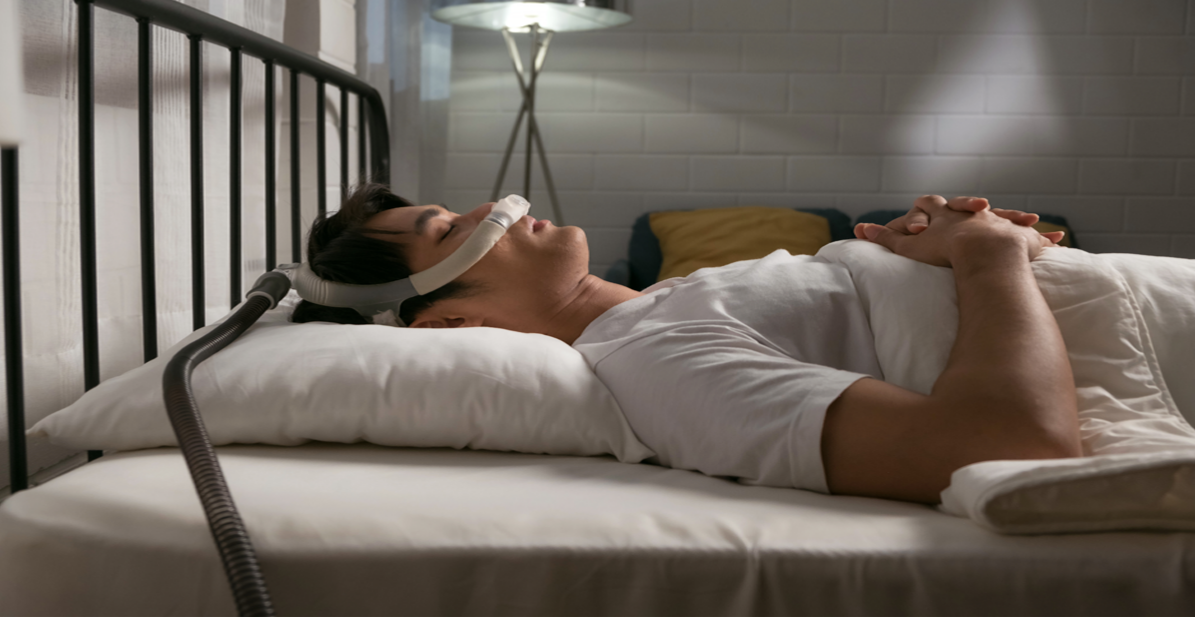Pharmacologic management of chronic obstructive pulmonary disease (COPD) centers on the use of inhaled bronchodilators and occasionally corticosteroids, delivered primarily through handheld devices such as pressurized metered-dose inhalers (pMDIs), dry powder inhalers (DPIs), and soft mist inhalers (SMIs). This framework, emphasized in the Global Initiative for Chronic Obstructive Lung Disease (GOLD) guidelines, assumes that all patients can effectively use these devices. However, this assumption does not universally apply. A growing body of evidence demonstrates that a substantial subset of patients struggles with the cognitive, physical, or inspiratory demands required by handheld inhalers, even after repeated training. For these individuals, the standard approach to inhaled therapy may inadvertently lead to suboptimal disease control, increased exacerbation risk, and avoidable healthcare utilization.
In this context, an all-nebulized regimen—defined as delivering all maintenance therapies via a nebulizer platform rather than across multiple device types—presents a patient-centered and pragmatic alternative. This strategy shifts the focus from device agnosticism to delivery optimization, leveraging a mode of administration that is independent of peak inspiratory flow and less reliant on complex motor or cognitive coordination. For patients with persistent inhaler technique errors, advanced age, or significant frailty, this simplified delivery method may facilitate more consistent drug deposition, reduce treatment burden, and ultimately enhance clinical outcomes. Although not universally applicable, all-nebulized therapy aligns with the principles of precision medicine and may be particularly valuable for carefully selected patient populations. This article outlines the rationale, supporting evidence, and implementation considerations for all-nebulized therapy in COPD, with an emphasis on identifying those most likely to benefit.
IDENTIFYING CANDIADTES FOR ALL-NEBULIZED THERAPY
Age-Related Limitations and Inhaler Technique Errors. Advanced age is among the most consistent predictors of inhaler misuse. Studies show that individuals aged 65 years and older are significantly more likely to commit critical errors in inhaler technique than younger patients. Factors such as decreased manual dexterity, cognitive slowing, arthritis, and visual impairment can all contribute to impaired inhaler use. A 2020 systematic review found that older adults were nearly five times more likely to make technique-critical errors across devices compared to younger adults, with these errors correlating with poorer symptom control and increased exacerbation risk (Sulaiman et al., 2020). Nebulized therapy circumvents these barriers by delivering aerosolized medication via passive tidal breathing, removing the need for precise timing, actuation coordination, or inspiratory effort. As a result, this approach is particularly well suited for older patients who, despite best efforts at education and support, are unable to effectively self-administer medications via standard devices.
Low Peak Inspiratory Flow. DPIs require a rapid and forceful inhalation to disperse the powdered medication into respirable particles. Unfortunately, a sizable proportion of patients with moderate to severe COPD, particularly those with GOLD stage III/IV disease or during post-exacerbation recovery, cannot consistently generate sufficient peak inspiratory flow (PIF) for DPI activation. Mahler et al. (2019) reported that nearly 30% of patients in an outpatient COPD cohort had suboptimal PIF for at least one of the DPI medications they were prescribed. Nebulizers, whether jet or mesh, are entirely independent of inspiratory effort and deliver medication effectively during relaxed tidal breathing, making them ideal for patients with diminished respiratory muscle strength, frailty, or acute illness.
Poly-device Use and Inhaler Confusion. In clinical practice, patients are frequently prescribed multiple inhaler types, each with distinct operational requirements. This poly-device approach introduces complexity and increases the likelihood of technique errors. Studies have shown that patients using more than one inhaler device are at significantly higher risk of errors, particularly with tasks like priming, breath-holding, and proper exhalation (Melani et al., 2011). These errors are not benign; they can result in subtherapeutic drug delivery and directly contribute to disease progression and exacerbations. In such cases, an all-nebulized approach offers a simplified, unified delivery system that can mitigate confusion, improve adherence, and enhance treatment consistency across medication classes.
Cognitive Impairment and Limited Health Literacy. Cognitive dysfunction, including mild cognitive impairment and dementia, is common among older adults with COPD and is a strong predictor of inhaler technique errors. Even with proper education, individuals with cognitive limitations struggle to retain and execute the multistep procedures required by most handheld inhalers. Similar difficulties are observed among patients with low health literacy or limited educational attainment. Nebulized therapy, by requiring minimal sequencing and coordination, offers a lower-cognitive-load alternative. In many cases, caregivers or healthcare providers can administer or assist with nebulized therapy, further improving adherence and medication consistency.
Post-Hospitalization and Frailty Syndromes. The immediate post-hospitalization period following a COPD exacerbation is marked by reduced energy, functional decline, and often impaired inspiratory effort. During this vulnerable period, patients may struggle to resume proper inhaler use, increasing their risk for early readmission. Transitioning to an all-nebulized regimen during recovery can support treatment continuity, ensure effective drug delivery, and bridge the gap until functional status improves. This strategy is also relevant in post-acute care facilities, where trained staff can administer nebulized therapy more reliably than supervise multi-device inhaler use.
Clinical Evidence Supporting Nebulized Therapy. The clinical efficacy of nebulized therapies has been established across multiple drug classes, including long-acting muscarinic antagonists (LAMAs), long-acting beta agonists (LABAs), and novel anti-inflammatory agents. Revefenacin, a once-daily nebulized LAMA, demonstrated significant improvements in trough FEV₁ in two large Phase III trials. Donohue et al. (2019) found that revefenacin 175 mcg via jet nebulizer improved trough FEV₁ by 146–160 mL over placebo, with benefits comparable to tiotropium. These improvements were consistent across subgroups, including elderly patients and those using background ICS/LABA combinations (Sethi et al., 2020).
Formoterol fumarate, a twice-daily nebulized LABA, has also shown lung function improvements and patient satisfaction, particularly among individuals switching from pMDI therapy (Dalby et al., 2004). More recently, the dual phosphodiesterase (PDE) 3/4 inhibitor ensifentrine, delivered via nebulizer, demonstrated significant improvements in lung function, symptom scores, and a 40% reduction in exacerbation risk in the ENHANCE trials (Anzueto et al., 2023).
Patient-reported outcomes further support the utility of nebulized therapy. In a real-world survey of 103 patients using home nebulizers, 77% reported high satisfaction and 70% of caregivers noted improved quality of life. Patients cited easier breathing, longer symptom relief, and more consistent use compared to handheld devices. Notably, these subjective improvements occurred even when spirometric changes were similar across delivery methods, suggesting that patient experience may capture important therapeutic effects beyond traditional objective endpoints (Mahler et al., 2016).
Physiological and Practical Advantages of Nebulized Delivery. Nebulized therapy offers several physiologic and practical advantages that contribute to its value in COPD care. The prolonged inhalation time over multiple tidal breaths enables more uniform peripheral lung deposition, which is particularly beneficial in small airway disease—a hallmark of COPD. Imaging studies have demonstrated that nebulizers achieve broader and more consistent aerosol distribution than single-breath inhalers, likely contributing to reductions in dynamic hyperinflation and improved dyspnea perception (Labiris & Dolovich, 2003).
Nebulized corticosteroids, such as budesonide or ciclesonide, have also shown reduced systemic absorption when formulated specifically for inhalation. This feature is particularly relevant in older adults at increased risk of systemic corticosteroid effects, such as osteoporosis or diabetes (Derom et al., 2012). In addition, the use of a single delivery platform simplifies care coordination and reduces the training burden for patients, caregivers, and clinical teams—especially in long-term care, palliative, or home health settings.
Limitations and Implementation Considerations. Despite its benefits, all-nebulized therapy is not without limitations. Treatment time remains one of the most cited barriers, with nebulizer sessions typically lasting 10 to 15 minutes per dose. For patients requiring multiple medications or doses per day, this can become burdensome. While portable mesh nebulizers have reduced treatment times and improved convenience, cost and access remain obstacles for many patients. Additionally, while maintenance therapy can be delivered via nebulizer, patients still require fast-acting bronchodilators for rescue use. Most continue to rely on SABA pMDIs for acute symptom relief, although research into portable nebulized rescue formulations is ongoing.
Future Directions. Further research is needed to define the comparative effectiveness of all-nebulized therapy versus optimized inhaler regimens in high-risk populations. Advances in nebulizer technology, including Bluetooth-enabled “smart” nebulizers capable of tracking adherence and integrating with telehealth systems, may offer valuable tools for personalized COPD management. Additionally, the development of fixed-dose combination nebulized therapies—including LAMA/LABA/ICS triple therapy—holds promise for further simplifying regimens and enhancing adherence.
KEY TAKEAWAYS
- Patient Selection is Critical: All-nebulized therapy is not appropriate for all COPD patients, but offers distinct advantages for individuals with advanced age, cognitive impairment, low inspiratory flow, poly-device complexity, or repeated inhaler errors.
- Clinical Efficacy and Tolerability are Established: Multiple randomized trials and real-world studies support the effectiveness of nebulized bronchodilators and anti-inflammatory agents in improving lung function, quality of life, and symptom control—particularly in patients poorly served by handheld devices.
- Implementation Requires a Systems-Based Approach: Successful deployment of all-nebulized therapy depends on careful patient selection, education on device use and maintenance, integration with existing care pathways, and attention to structural barriers such as cost, access, and caregiver support.
LEARN ABOUT HOW APRIA SUPPORTS COPD PATIENTS
Helpful Resources:
- Anzueto A, Ferguson GT, Tal-Singer R, et al. Ensifentrine, a novel inhaled PDE3 and PDE4 inhibitor for the treatment of chronic obstructive pulmonary disease (COPD): results from the ENHANCE trials. Am J Respir Crit Care Med. 2023;207(6):623-636.
- Dalby R, Spallek M, Voshaar T. A review of the development of Respimat Soft Mist Inhaler. Int J Pharm. 2004;283(1-2):1-9.
- Derom E, Van Schoor J, Van de Walle S, et al. Systemic bioavailability of ciclesonide and fluticasone propionate administered via pressurized metered-dose inhaler in subjects with COPD. Int J Chron Obstruct Pulmon Dis. 2012;7:141-149.
- Donohue JF, Mahler DA, Chipps B, et al. Long-term safety of nebulized revefenacin in moderate to very severe COPD. Int J Chron Obstruct Pulmon Dis. 2019;14:1235-1245.
- Labiris NR, Dolovich MB. Pulmonary drug delivery. Part I: physiological factors affecting therapeutic effectiveness of aerosolized medications. Br J Clin Pharmacol. 2003;56(6):588-599.
- Mahler DA, Waterman LA, Ward J, et al. Patient satisfaction with nebulized therapy in COPD. Int J Chron Obstruct Pulmon Dis. 2016;11:2585-2592.
- Mahler DA, Ohar JA, Barnes CN, et al. Nebulized revefenacin for the treatment of COPD: phase 3 trials. Respir Med. 2019;153:61-70.
- Melani AS, Bonavia M, Cilenti V, et al. Inhaler mishandling remains common in real life and is associated with reduced disease control. Respir Med. 2011;105(6):930-938.
- Sethi S, Kerwin E, Spangenthal S, et al. Efficacy and safety of revefenacin, a once-daily, long-acting muscarinic antagonist, in patients with COPD using concomitant LABA or LABA/ICS therapy. Int J Chron Obstruct Pulmon Dis. 2020;15:59-69.
- Sulaiman I, Cushen B, Greene G, et al. Objective assessment of inhaler technique among COPD patients using a smart inhaler device. Int J Chron Obstruct Pulmon Dis. 2020;15:589-598.

.png)



